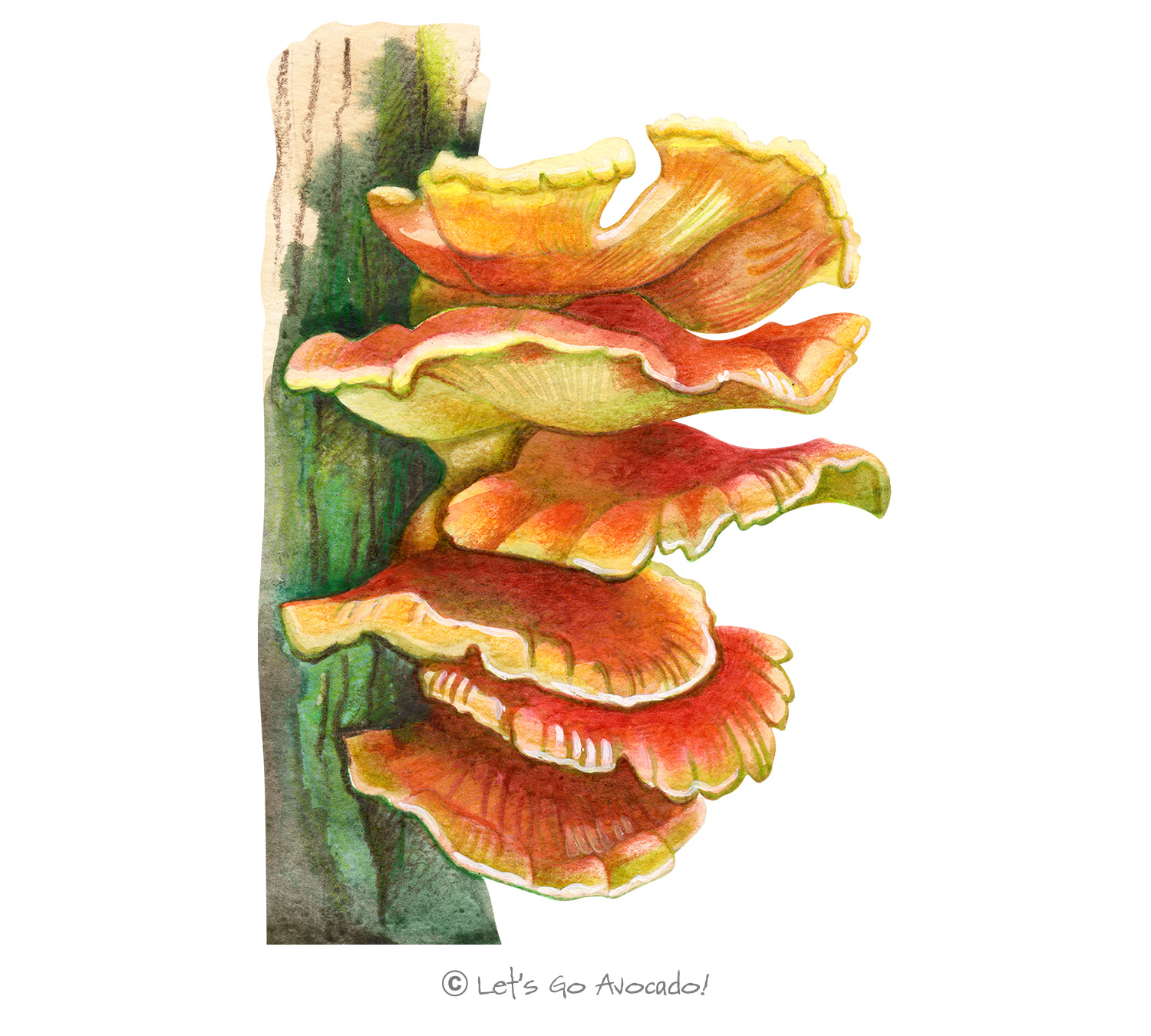

Chicken Of The Woods
Sulphur Shelf, Chicken Mushroom
Laetiporus sulphureus
This page may contain affiliate links.
Read our disclosure and privacy policy here.
Chicken of the Woods is a brightly colored mushroom that grows on trees, particularly on dead or dying hardwoods. Notable for its striking appearance and edibility, it’s favored by many foragers for its meaty texture and taste reminiscent of chicken.
Chicken Of The Woods
Common Name
Chicken Of The Woods
Other Names
Sulphur Shelf, Chicken Mushroom
Latin Name
Laetiporus sulphureus
Distribution
It can be found widely across North America and Europe.
Appearance
This mushroom has overlapping brackets that are bright yellow-orange on top and sulphur-yellow underneath. They are fan-shaped and grow in large, shelf-like clusters on tree trunks.
Size
Individual brackets can be up to 30 cm (12 inches) across and up to 10 cm (4 inches) thick.
Habitat
Prefers dead or dying hardwood trees, especially oak, although it can also be found on yew, willow, and other tree species.
Diet
Saprotrophic, deriving nutrients from breaking down dead or decaying organic matter.
Lifecycle
Like other fungi, its lifecycle begins with spore germination. These germinated spores form myceliumMycelium is like the ‘root’ or the ‘body’ of a fungus. Just as plants have roots, fungi have mycelium. It is made up of tiny thread-like structures called hyphae that spread out in the soil or other materials where the fungus grows. Learn More which, under the right conditions, gives rise to the fruiting body (the mushroom). This mushroom then releases spores, and the process begins anew.
Defense Mechanisms
While Chicken of the Woods is edible and sought after, not all Laetiporus species are considered good for consumption. Some individuals may also have allergic reactions to it. It’s essential to correctly identify and ensure personal compatibility before consumption.
Ecological Importance
As a wood-decaying fungus, Chicken of the Woods plays a significant role in breaking down and recycling nutrients from dead trees, contributing to the overall health of forest ecosystemsAn ecosystem is a community of living organisms, like insects and birds, and non-living components, like water and rocks, that interact with each other in a specific area. Learn More.
ConservationThe act of protecting and preserving natural resources and the environment. Conservation efforts are important to protect beavers and their habitats. Status
Not classified as threatened; it is a widespread and common species.

There’s a lot to explore right where we are, in our own neighborhoods and backyards! Join us while we get off the couch and explore the everyday wonders of nature, science, space, engineering, art, and anything else we stumble upon during on our adventures.







